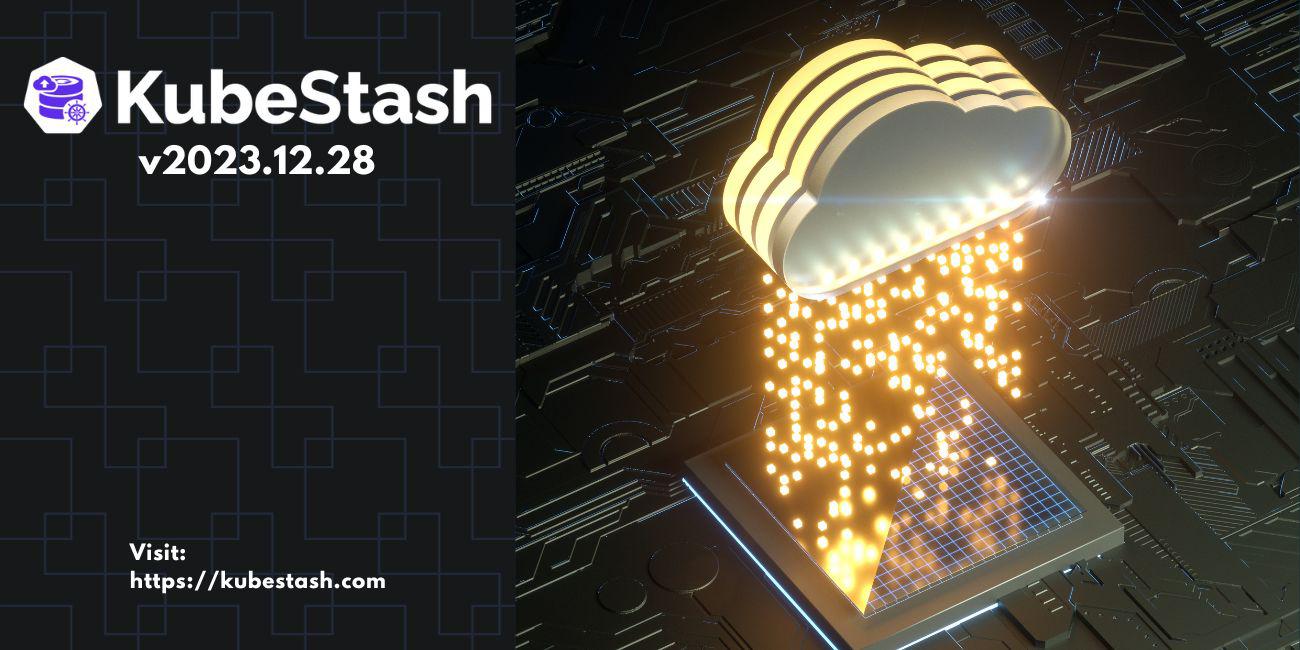
We are pleased to announce the release of KubeStash v2023.12.28, packed with new features and important bug fixes. You can check out the full changelog HERE
.
In this post, we’ll highlight the key updates.
New Features
You can now backup and restore the manifests of KubeDB managed
MySQLdatabase (#89 ).Here is an example how to configure
BackupConfigurationto backup manifests of KubeDB managedMySQLdatabase:apiVersion: core.kubestash.com/v1alpha1 kind: BackupConfiguration metadata: name: mysql-manifest-backup namespace: demo spec: target: apiGroup: kubedb.com kind: MySQL namespace: demo name: sample-mysql sessions: - name: manifest-backup sessionHistoryLimit: 3 scheduler: schedule: "*/10 * * * *" successfulJobsHistoryLimit: 1 failedJobsHistoryLimit: 1 jobTemplate: backoffLimit: 1 repositories: - name: mysql-repo directory: /manifest/sample-mysql encryptionSecret: name: mysql-encry-secret namespace: demo addon: name: mysql-addon tasks: - name: ManifestBackup failurePolicy: Retry retryConfig: maxRetry: 2 delay: 1mHere is an example how to configure
RestoreSessionto restore manifests of KubeDB managedMySQLdatabase:apiVersion: core.kubestash.com/v1alpha1 kind: RestoreSession metadata: name: mysql-manifest-restore namespace: demo spec: manifestOptions: restoreNamespace: mysql-demo mySQL: db: true dbName: demo-mysql authSecret: true configSecret: true dataSource: snapshot: latest repository: mysql-repo encryptionSecret: name: mysql-encry-secret namespace: demo addon: name: mysql-addon tasks: - name: ManifestRestoreWe’ve added support for pod hook execution strategy. Now you can provide a value for field
.spec.executor.pod.strategyin aHookTemplate. Pod hook execution strategy specifies what should be the behavior when multiple pods are selected depending onselectorfor executing the hook. The valid values for this field are:ExecuteOnOne: Execute hook on only one of the selected pods. This is default behavior.ExecuteOnAll: Execute hook on all the selected pods.Here is an example of
HookTemplateusing pod executor withExecuteOnOnestrategy:apiVersion: core.kubestash.com/v1alpha1 kind: HookTemplate metadata: name: demo-pod-hook namespace: demo spec: usagePolicy: allowedNamespaces: from: All params: - name: TEST usage: This is a test param required: false action: exec: command: - /bin/sh - -c - echo data_test > /source/data/data.txt executor: type: Pod pod: selector: name=test-app, test=hook strategy: ExecuteOnOne
You can now trigger backup for specific sessions using KubeStash CLI (#10 ). Here is an example:
Assume that the applied
BackupConfigurationis configured with multiple sessions. Now you want to trigger backup for specific sessions. To do so, you have to provide comma (,) separated sessions name usingsessionsflag.$ kubectl kubestash trigger -n <namespace> <backupconfiguration-name> --sessions=<sessions-name>
Improvements & Bug Fixes
- Fixed a bug that was preventing the creation of multiple Retention Policies when a default one exists in a namespace.
- Fixed a bug in validation for selector type usage policy.
- Fixed a bug that was causing an “addon not found” error for MySQL versions
8.1.0and8.2.0.
What Next?
Please try the latest release and give us your valuable feedback.
- If you want to install KubeStash in a clean cluster, please follow the installation instruction from HERE .
- If you want to upgrade KubeStash from a previous version, please follow the upgrade instruction from HERE .
Support
To speak with us, please leave a message on our website .
To receive product announcements, follow us on Twitter/X .










